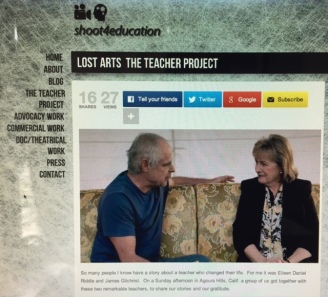Where in Charlotte Danielson’s 2013 Framework for Teaching rubric, which is currently being used throughout the United States to measure teacher practice, is the component for teaching empathy, for inspiring students and for giving them tools, as well as the motivation, to keep from giving up on life?
When I was in high school, as far as I know, administrators did not use a rubric to evaluate my teachers. I became a college and graduate student of history, and a social justice educator, because of Dr. Rick Chase, my high school history teacher at the The Lovett School in Atlanta, Georgia. Through Dr. Chase, my interest in politics blossomed. I discovered that I gravitated towards candidates who strived to be of service to the poor and working class. I felt deep compassion for Paul Tsongas whose dream of becoming U.S. president in 1992 was cut short due – in large part, as I recall – to his health problems. Like Tsongas, I was a swimmer and took pride in my butterfly stroke.

from The Lovett School’s Fall 2015 magazine
Recently, the talented film editor Michael Elliot produced a four-minute-long film honoring Eileen Daniel Riddle and James Gilchrist, two retired theater arts teachers from Agoura Hills, California who changed his life and those of many of his classmates. 40 years later, we are moved by the testimonials of Riddle and Gilchrist’s former students. “I love this man so much,” exclaims one woman as she hugs James Gilchrist. “They were the spark that set my life in motion,” remarks Michael Elliot who also credited Eileen Daniel Riddle with helping students find beauty through pain.

Film editor Michael Elliot with his former theater arts teacher, Eileen Daniel Riddle
Please share with Michael your story of a teacher who inspired you. Visit shoot4education.com/teacherproject.
While these lifelong teachers, now retired, had different teaching styles, interests and personalities, they all taught with passion and instinct, traits not measurable by a rubric. They also had freedom and autonomy, conditions that motivate teachers and boost their morale. The current path that we are on – the standardization of teaching and learning and the narrowing of curriculum – is short-sighted and unsustainable. It unfortunately deprives students of experiences that Michael Elliot touchingly describes in his short film. Eileen Daniel Riddle, James Gilchrist and Dr. Rick Chase are teachers who not only inspired students to expand their learning but also created spaces in which students could feel alive.
What rubric measures that?

Pingback: Katie Lapham: Can You Teach without Charlotte Danielson’s Rubric? | Diane Ravitch's blog